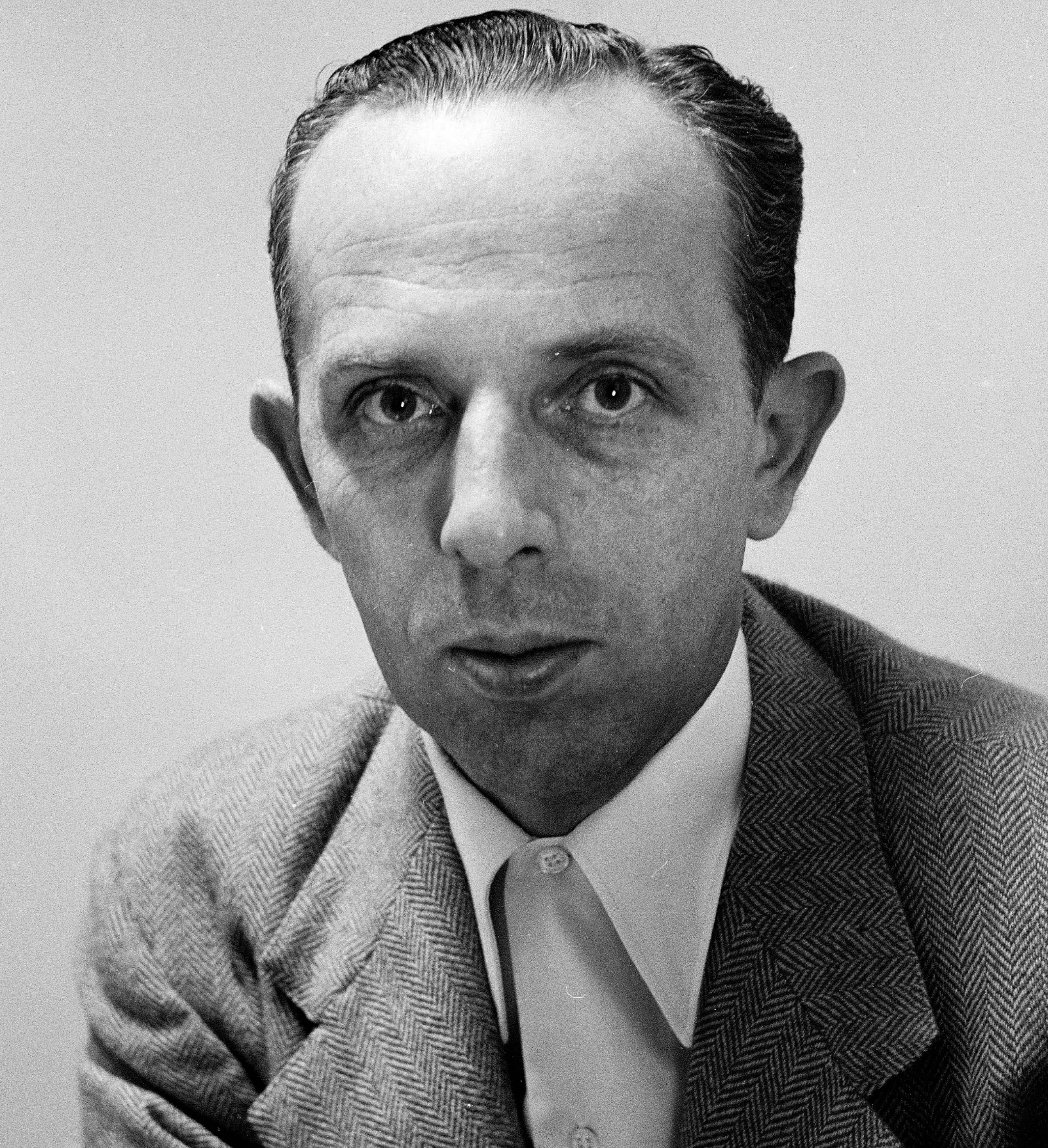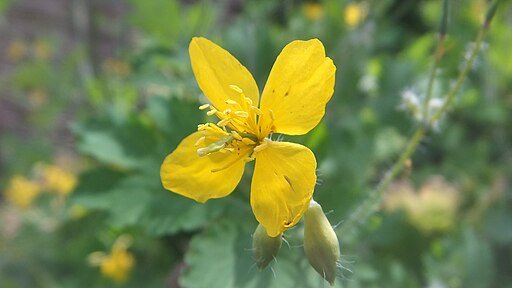The Celandine Poppy
The history of the Celandine Poppy, the uncanny sensation of sameness, and the sad saga of Manny Balestrero.
Stylophorum diphyllum, May 1st
“Life can make a twin of you,
When you occupy the same air,
You can’t feel them twinning you,
Until your doppelgänger’s there.
You’re twice the Sapien you were,
Cloned and replicated new fellows,
You’re not feeling yourself just now,
Feats and phrases are all echoes.
But if someone seeks out a quote,
You tell them to ask the mirror you,
Only things trumping who you are,
Are you and matching Double You.”
Christopher “Manny” Balestrero. Innocent!
January 14th was a typically crisp New York day in Queens, with temperatures reaching a brisk but manageable 45 degrees and a mild wind tousling in from the west. Christopher “Manny” Balestrero returned to his modest stucco home on 73rd St that afternoon, where he had lived for 20 years, after a visit with his mother 10 miles west in Union City, NJ. Manny was a pious fellow, mild mannered and quiet by all accounts. Each night he took the F train from the subway station two blocks down to play stand up bass for a rumba band at the glittering Stork Club. Every morning he ate a musician’s breakfast of coffee and eggs at Bickford’s cafeteria before walking home to his wife Rose and their two boys, Robert and Gregory. One day prior, Manny had taken a brief detour to the local branch office of the Prudential Insurance Company of America to inquire about a loan for his wife’s much needed dental work. About $325 should do it. Today, as he returned home from his mum’s place and mounted the several steps to his front door, he heard a hail from across the twilight street: “Hey Chris!” He was approached through the dimness by three men flashing badges. Before reporting to his wife, Manny was escorted to the local precinct and then on a tour of a dozen Queens liquor stores, drug stores, and a delicatessen. At each, Balestrero was instructed to pace into the store under scrutiny of the proprietor, up to the counter, and back.
Charles James Daniell. boooooo.
Manny would soon learn that on two occasions last year—July 9 and Dec. 18—an office of the Prudential Insurance Company had been robbed of about $300 by an armed man. It was in this office yesterday that he, Christopher “Manny” Balestrero, had been identified as the man in question and now two women from that office were on their way to confirm his identity.
Manny was arrested and charged with several accounts of assault and robbery. His next 15 weeks were spent first in prison, then in law offices and court rooms, doggedly defending his reputation, until mercifully, on April 29th, two neighborhood delicatessen owners caught a 38 year old jobless plastics moulder named Charles Daniell while attempting to rob their store at gun point. Daniell would eventually admit to every crime assigned to Manny: “Name any stick-up in Jackson Heights and I did it.” At final count, he acquiesced to and was convicted of some 40 holdups.
Not his best work.
Christopher “Manny” Balestrero's prosecution made national news. It was the subject of an Alfred Hitchcock documentary “The Wrong Man” (a box office flop, apparently) and garnered an 8 page write-up in Life magazine. It made famous the idea that out there somewhere might be someone who everyone might confuse for being you. This story celebre-tized in a way never before possible, in film and print, our unsettled fears and innate fascination with the possibility of a dual self: the Doppleganger.
A German word translating literally to ‘double-walker’, doppelgänger originally invoked supernatural intonations. In 1796, for illustration, Catherine II of Russia was aroused by servants who insisted her double was presently alighted upon her throne. Undoubtedly startled and a bit confused, she could find no better recourse than to have the apparition shot. What became of it, or her now be-riddled throne room is sadly lost to history.
Carl Sandburg wrote in his 1926 biography of Abraham Lincoln “On the evening of his election he had thrown himself on one of the haircloth sofas at home, just after the first telegrams of November 6 had told him he was elected President, and looking into a bureau mirror across the room he saw himself full length, but with two faces. It bothered him; he got up; the illusion vanished; but when he lay down again there in the glass again were two faces, one paler than the other. .”
In contemporary lingo, however, the word is intended to suggest merely an uncanny similarity between two peoples, a la Manny Balestrero and Charles Daniell. Any two individuals with a significant degree of sameness are often said to be doppelgängers:
Sarah Hyland and Mila Kunis
Bill Skarsgård and Steve Buscemi
Liam Neeson and Ralph Fiennes
Margot Robbie and Samara Weaving
Amy Adams and Isla Fisher
Will Ferrell and Chad Smith
Jessica Chastain and Bryce Dallas Howard
Some have made a career of employing our intrinsic keenness for duality. For the last 25 years, the “I’m Not a Look-a-Like” project conducted by the French Canadian photographer François Brunelle has meticulously photo-documented human duplexity. If you haven’t partaken, his work is certainly worth a visit. It is so remarkable, in fact, that it helped to launch a research investigation into genomic characterization of non-familial doubles. The results were that people who look similar share considerable DNA. Makes sense.
Stephane Morin and Claude Langlois. From François Brunelle’s E-Project.
Chelidonium majus is a perennial herbaceous flowering plant belonging to the poppy family, known for its pinnate leaves, bright four petalled flowers, and upright habit. It makes a curious yellow orange latex when injured and is commonly known as greater celandine, tetterwort, or evocatively, nipplewort . Native to most regions of Europe and western Asia, it was imported as a natural remedy to liver disease and eczema, from which it gets its common name (‘tetter’ being an archaic word for scaly itchy skin patches), with early settlers into North America. Celandine refers to the Greek khelidōn, or ‘swallow’, the flowering of the plant being associated with the arrival of swallows. It thrives in rocky slopes, woodlands, and roadsides and quickly became a weedy nuisance in the US. It is now considered invasive in most parts of this continent. In an effort to control its spread, several states have restricted its use. As the Missouri Botanical Garden puts it: “This plant is listed as a noxious weed in one or more Midwestern states outside Missouri and should not be moved or grown under conditions that would involve danger of dissemination.” That is one un-loved plant.
Invasive weed.
But in May 1887, some 200 years after Greater Celandine was introduced into North America, poet and naturalist Robert Elliot presented an allegedly new but curiously familiar shade loving specimen to the London chapter of the Entomological Society of Ontario. The plant had pinnate leaves, exuberant yellow flowers, and poppy-like pods. It produced yellow orange sap when injured. Its four petalled flowers stood upright and the plant grew happily in moist woodlands. Surely Elliot had mistaken the well known and decidedly pestiferous Greater Celandine for something wondrous and novel. In fact, he had uncovered the celandine doppelgänger—a plant so comparable it would bedevil taxonomists and environmentalists for a century. While one plant became an unwanted infestation, this new genus, Stylophorum diphyllum, remains a delightful and much loved addition to shade gardens and deciduous forests. Elliot had presented the first documentation and description of the magnificent Woodland, or sometimes, in honor of its look-a-like, ’Celandine’ poppy:
Endagered ornamental.
Stylophorum derives from the Greek ‘stylos-’ (pillar) and ‘-phoros’ (bearing), referring to the plant’s leggy columnar habit, while the specific epithet diphyllum translates to “having two leaves” or pinnate. It is an herbaceous perennial native to North America found typically in dampish forests and along ravines. It typically grows 1.5’ tall from underground rhizomes and produces bristly blue green pods that hang below the leaves after fertilization. When injured, the plant oozes a yellow orange latex that will stain your nickers if left unchecked and was once used by native peoples as a dye. It is not aggressive, but individual specimens are relatively long lived and self seed when content. Despite that, when the Atlas of Rare Plants of Ontario was published a century after Elliot’s original description, Stylophorum diphyllum was listed as “probably extirpated” in Ontario. Patently, the species was not extinct globally; a population of 700 plants was found that same year just outside of London. I have several growing in my garden now. Still, in the northern stretches of its native habitat the woodland poppy is considered endangered at the time of this writing. It has been listed under Ontario's Endangered Species Act since 2007.
Celebrities that look like historical figures:
John Krasinski and Carl Feilberg
Lily Collins and Audrey Hepburnlen
Zach Galifianakis and Louis Vuitton
Ellen DeGeneres and Henry Thoreau
Jack Gleeson and Caligula
Other Flower Doppelgängers
Snapdragons (Antirrhinum majus), Summer Snapdragons (Angelonia augustifolia), and yellow toadflax (Linaria vulgaris)
Alpine Pink Dianthus (Dianthus Alpinus) and Dog-Rose (Rosa canina)
Camellias (Camellia spp.) and Roses (Rosa spp.)
Knowledge Sources
https://www.businessinsider.com/celebrities-who-look-alike-2017-1
https://www.cell.com/cell-reports/fulltext/S2211-1247(22)01075-0
https://nanps.org/native_plants_know/stylophorum-diphyllum-wood-poppy-rare-for-a-reason-4-3/
https://www.netpoets.com/poems/teenfriend/1084001
https://db.cngb.org/onekp/species/Chelidonium%20majus
https://en.wikipedia.org/wiki/Stylophorum_diphyllum
https://plants.ces.ncsu.edu/plants/stylophorum-diphyllum/
https://www.missouribotanicalgarden.org/PlantFinder/PlantFinderDetails.aspx?kempercode=c273
https://npgsweb.ars-grin.gov/gringlobal/taxon/taxonomydetail?id=10169
https://www.sleek-mag.com/article/fairy-tale/
http://wesclark.com/jw/doppleganger_lincoln.html
Image Sources
https://commons.wikimedia.org/wiki/File:Chelidonium_majus_Greater_Celandine_flower.jpg
http://www.francoisbrunelle.com/webn/







